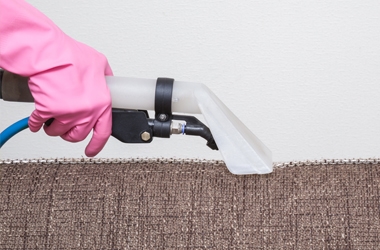What do upholstery cleaning codes mean
Regular cleaning is essential in order to keep upholstery in peak condition. This will ensure fabrics remain clean of spots, spills, residues and free from any malodours. Additionally, a reactive care plan also needs to be in place in order to tackle spills as soon as they are noticed in order to retain the longevity of fabrics and colours.
There is a huge variety of fabrics, sizing, styles and colours when it comes to the cleaning of upholstery so there will never be a one size fits all approach. For best results you should always check the individual upholstery labels which can usually be found under the cushion of a fabric chair or close to the opening of any covers, or under the product itself. Note; If you see zips around your chair or cushions this does not necessarily mean they can be removed for machine washing. Incorrectly machine washing upholstery can cause shrinkage, colour fading or damage so always read the instructions carefully.
Fortunately, to ensure fabrics and materials are cared for properly, all upholstery contains a universal code detailing the preferred cleaning methods. The below table shows what those upholstery cleaning codes mean:
| Upholstery Cleaning Code | Full Description |
| W | Stands for WET cleaning. This means that the upholstery can be safely cleaning using a water-based cleaning product or with an upholstery cleaning machine and detergent. This is normally found on the majority of durable fabrics typically used on furniture with a high volume of use and risk of soiling. Tip: Always avoid over-wetting this fabric as it may cause spotting or excessive shrinking. Also, be mindful of buttons, zips or fastenings which contain metal as these can rust leaving marks on the fabric. |
| S | Stands for SOLVENTS. This means the fabric must be cleaned with solvents only (dry cleaning). Water should not be applied to the fabric and any spot cleaning is only advised if the product is meant for home dry cleaning use. Note: Solvent cleaning will not remove water stains. |
| SW | Stands for SOLVENTS & WATER. This cleaning code is not often seen, but means you can spot clean using a specialist upholstery shampoo, solvent or mild detergent. Note: Take extra care not to over wet the upholstery in order to avoid water stains or damage. |
| X | Stands for VACUUM ONLY. Only clean this type of fabric by vacuuming or light brushing to prevent build up of dust or grime. If there are stains or spotting, we recommend contacting a professional upholstery cleaning service, as any water or solvent based solutions may cause spotting or shrink damage. |
| DC | Stands for DRY CLEAN ONLY. |
| F | Stands for FOAM. Do not use water based products, instead, use a mild foam upholstery cleaning agent. |
Final tips: We always recommend testing any cleaning products on a small inconspicuous area first in order to check for colour bleeding or shrinkage. All pile fabrics may require brushing after cleaning to restore appearance.
For information on the Envirodri range of upholstery cleaning products please click here .



